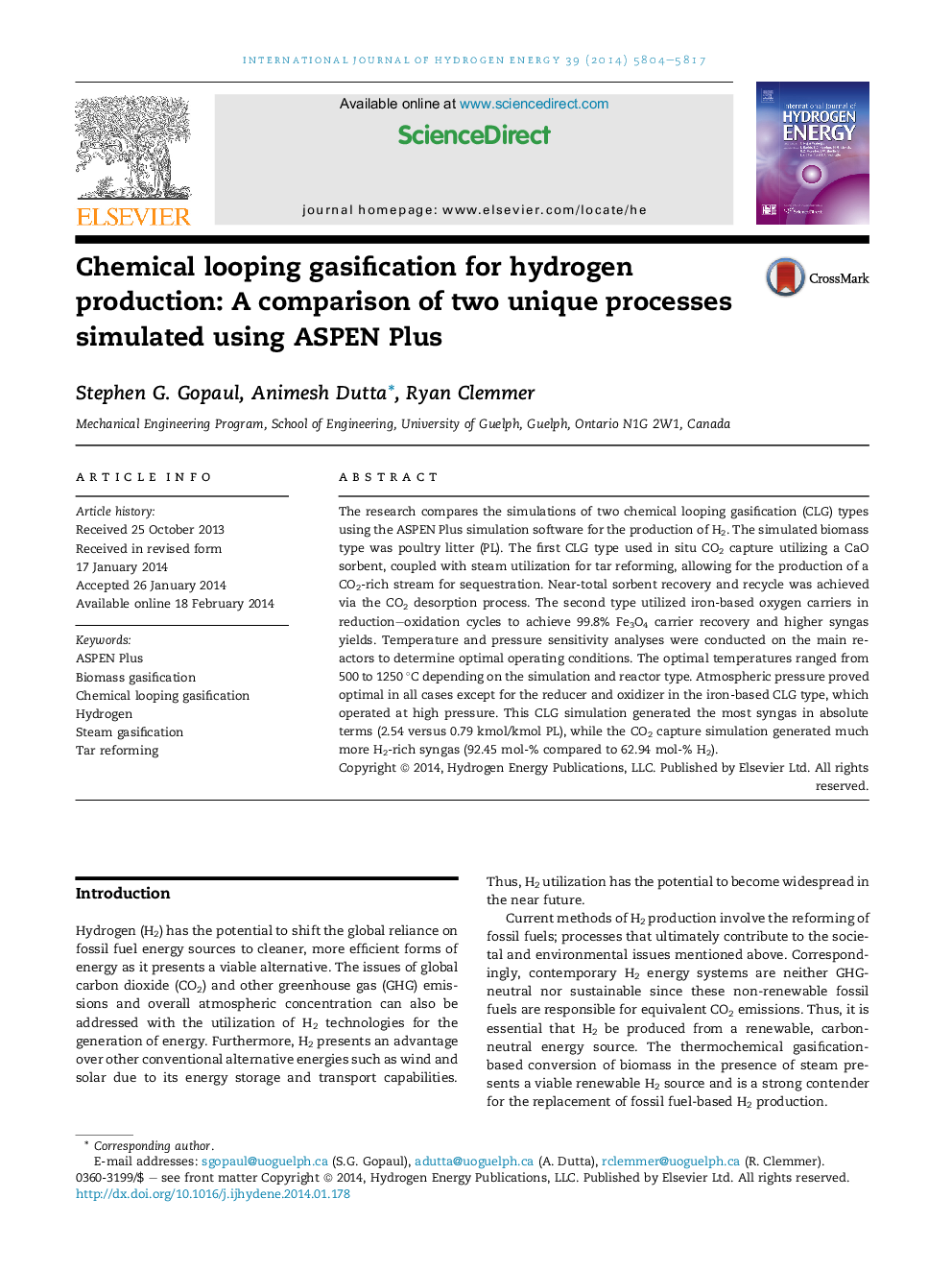| Article ID | Journal | Published Year | Pages | File Type |
|---|---|---|---|---|
| 7719699 | International Journal of Hydrogen Energy | 2014 | 14 Pages |
Abstract
The research compares the simulations of two chemical looping gasification (CLG) types using the ASPEN Plus simulation software for the production of H2. The simulated biomass type was poultry litter (PL). The first CLG type used in situ CO2 capture utilizing a CaO sorbent, coupled with steam utilization for tar reforming, allowing for the production of a CO2-rich stream for sequestration. Near-total sorbent recovery and recycle was achieved via the CO2 desorption process. The second type utilized iron-based oxygen carriers in reduction-oxidation cycles to achieve 99.8% Fe3O4 carrier recovery and higher syngas yields. Temperature and pressure sensitivity analyses were conducted on the main reactors to determine optimal operating conditions. The optimal temperatures ranged from 500 to 1250 °C depending on the simulation and reactor type. Atmospheric pressure proved optimal in all cases except for the reducer and oxidizer in the iron-based CLG type, which operated at high pressure. This CLG simulation generated the most syngas in absolute terms (2.54 versus 0.79 kmol/kmol PL), while the CO2 capture simulation generated much more H2-rich syngas (92.45 mol-% compared to 62.94 mol-% H2).
Keywords
Related Topics
Physical Sciences and Engineering
Chemistry
Electrochemistry
Authors
Stephen G. Gopaul, Animesh Dutta, Ryan Clemmer,
